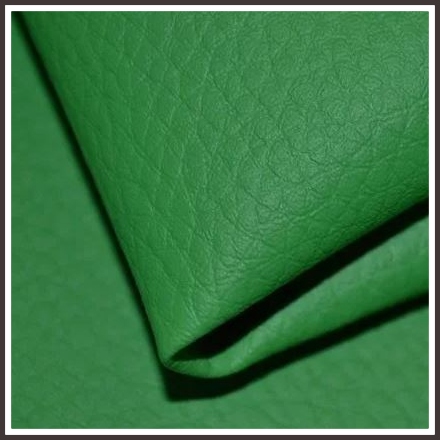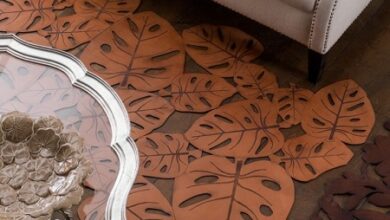Mar 22 2024
/
Misura della superficie per pelli piccole: l’importanza del condizionamento da condizioni di caldo secco
Misura della superficie per pelli piccole: l’importanza del condizionamento da condizioni di caldo secco
Le pelli di piccole dimensioni, vale a dire con superficie inferiore a 100 dmq, sono quelle che presentano maggiori problematiche nei controlli metrologici. Oltre all’errore legato alla risoluzione degli strumenti di misura della superficie ed all’approssimazione con i quali devono essere forniti i risultati (1 dmq), si aggiunge, infatti, un contributo collegato al mancato condizionamento dei campioni, così come prescritto nelle norme sulla misura della superficie (ISO 11646 e ISO 19076) e nel “Code of Practice for the area measurement of leather” dell’ICT (https://leather-council.org/what-we-do/code-of-practice-for-area-measurement/). Nelle stagioni più calde, infatti, l’assenza di un adeguato condizionamento delle pelli può contribuire al superamento dei valori limite del 2% e 3% prescritti dal Contratto Internazionale N. 7 sulle pelli finite anche con dispositivi perfettamente tarati e sottoposti a controlli metrologici.
Al fine di individuare i fattori di variabilità delle misure della superficie, negli ultimi anni la Stazione Sperimentale ha effettuato una serie di studi statistici anche sull’influenza delle condizioni ambientali, con lo scopo di informare le aziende sui rischi correlati al mancato condizionamento dei materiali prima della commercializzazione. Nel seguito si riportano i risultati ottenuti in condizioni di calore secco. Lo studio ha previsto l’analisi di 11 tipologie di pelli di piccole dimensioni, differenti per origine, tipo di concia e destinazione d’uso finale. Per ciascun campione sono state effettuate 10 misure ed il valore rappresentativo dell’area è stata definita dal valore medio. L’influenza del calore secco è stata valutata in condizionamenti di 48 ore a 35°C e 10% U.R. I risultati ottenuti in condizioni di caldo secco sono stati confrontati con quelli derivanti dai condizionamenti stabiliti dalle norme di settore, ovvero: 20°C e 65% U.R. (Alternative aging ISO 2419) e 23°C e 50% U.R. (Standard aging ISO 2419).
In tabella 1 è riportato il dettaglio dei campioni oggetto di indagine ed i risultati delle prove ottenute mediante macchina a tappeto non aspirato (Type B ISO 19076). La scelta della conveyor machine è legata all’assenza di sollecitazioni meccaniche (tipiche delle macchine a rulli) che possano indurre deformazioni nelle pelli e, quindi, aggiungere un ulteriore elemento di variabilità al dato.
| ID. | ARTICOLO | TIPO | CONCIA | USO | MISURA A 35°C / 10% | VARIAZIONE RISPETTO A 20°C / 65% | VARIAZIONE RISPETTO A 23°C / 50% |
| ID01 | Lavato | Bovino | Vegetale | Calzature | 62,1 | -1,6% | -1,6% |
| ID02 | Raggrinzito | Bovino | Cromo | Calzature | 64,4 | -3,7% | -3,7% |
| ID04 | Vitellino | Bovino | Vegetale | Pelletteria | 86,6 | -2,6% | -2,1% |
| ID05 | Pieno fiore | Caprina | Cromo | Pelletteria | 55,0 | -3,0% | -3,0% |
| ID06 | Agnello | Ovina | Cromo | Guanti | 35,1 | -3,0% | -2,2% |
| ID07 | Suede | Caprina | Cromo | Calzature | 42,0 | -3,7% | -3,7% |
| ID08 | Lavato | Ovina | Cromo | Calzature | 45,3 | -3,8% | -3,4% |
| ID09 | Raggrinzito | Ovina | Cromo | Calzature | 79,4 | -2,1% | -1,9% |
| ID10 | Vitellino | Bovino | Cromo | Abbigliamento | 48,3 | -2,0% | -1,4% |
| ID14 | Suede (split) | Ovina | Cromo | Abbigliamento | 51,5 | -2,1% | -2,1% |
| ID15 | Pieno fiore | Ovina | Cromo | Abbigliamento | 54,3 | -3,0% | -2,0% |
Tabella 1: Risultati delle prove di misura della superficie mediante macchina a tappeto non aspirato
I valori ottenuti evidenziano come l’assenza di un condizionamento conforme alla ISO 2419 possa incidere in modo determinante sulla superficie misurata del cuoio. In tutti i casi la variazione percentuale rispetto alle condizioni 23/50 e 20/65 (quest’ultima di riferimento nei controlli metrologici) è risultato dello stesso ordine di grandezza dei limiti definiti dal Contratto Internazionale N. 7. Contrariamente ad altri fattori, però, le condizioni di caldo secco hanno determinato una sottostima sistematica del valore della superficie che, se da un lato può incidere sul calcolo della resa da parte dell’utilizzatore, dall’altro comporta un impatto non trascurabile sul fatturato.
Più che in altri casi, quindi, data l’estrema variabilità della superficie, per i cuoi di piccole dimensioni è sempre consigliabile attuare i condizionamenti definiti nelle norme di settore per evitare contestazioni non previste con i clienti.
English Version
Surface measurement for small leather: the importance of conditioning from dry heat conditions
Small leathers, i.e. with a surface area of less than 100 dm2, are those that present the greatest problems in metrological checks. In addition to the error related with the resolution of the surface measuring devices and the approximation with which the results must be provided (1 dm2), there is, in fact, a contribution related not conditioned samples as prescribed in the standards on surface measurement (ISO 11646 and ISO 19076) and in the ICT “Code of Practice for the area measurement of leather” (https://leather-council.org/what-we-do/code-of-practice-for -area-measurement/). In the warmer seasons, in fact, a not adequate conditioning of leathers can contribute to exceeding the limit values of 2% and 3% defined by International Contract No. 7 on finished leather, even with perfectly calibrated devices.
In order to identify the factors of variability in surface measurements, in recent years the Stazione Sperimentale carried out a series of statistical studies about the influence of environmental conditions, with the aim of informing companies on the risks related in trading not-conditioned materials. The results obtained in dry heat conditions are reported in table below. The study involved the 11 types of small leather, differing in origin, type of tanning and final use. For each sample, 10 measurements were carried out and the representative value of the area was defined by the average area. The influence of dry heat was evaluated after 48-hour conditioning at 35°C and 10% R.H. The results obtained have been compared with those deriving from the conditioning established by industry standards, i.e.: 20°C and 65% R.H. (Alternative conditioning ISO 2419) and 23°C and 50% R.H. (Standard conditioning ISO 2419).
Table 1 shows the details of the samples under investigation and the results of the tests using a non-vacuum conveyor machine (Type B ISO 19076). The choice of the conveyor machine is related to the absence of mechanical stresses (typical of roller machines) which could determine deformations in leathers and, therefore, add a further element of variability to the data.
| ID. | ARTICLE | TYPE | TANNING | USE | MEASUREMENTS AT 35°C / 10% | DIFFERENCES TO 20°C / 65% | DIFFERENCES TO 23°C / 50% |
| ID01 | Washed | Bovine | Vegetable | Footwear | 62,1 | -1,6% | -1,6% |
| ID02 | Wrinkled | Bovine | Chrome | Footwear | 64,4 | -3,7% | -3,7% |
| ID04 | Calf | Bovine | Vegetable | Leather goods | 86,6 | -2,6% | -2,1% |
| ID05 | Full grain | Caprine | Chrome | Leather goods | 55,0 | -3,0% | -3,0% |
| ID06 | Lamb | Ovine | Chrome | Gloves | 35,1 | -3,0% | -2,2% |
| ID07 | Suede | Caprine | Chrome | Footwear | 42,0 | -3,7% | -3,7% |
| ID08 | Washed | Ovine | Chrome | Footwear | 45,3 | -3,8% | -3,4% |
| ID09 | Wrinkled | Ovine | Chrome | Footwear | 79,4 | -2,1% | -1,9% |
| ID10 | Calf | Bovine | Chrome | Apparel | 48,3 | -2,0% | -1,4% |
| ID14 | Suede (split) | Ovine | Chrome | Apparel | 51,5 | -2,1% | -2,1% |
| ID15 | Full grain | Ovine | Chrome | Apparel | 54,3 | -3,0% | -2,0% |
Table 1: Results of surface measurement tests using a non-vacuum conveyor machine
The values highlight how the absence of a conditioning compliant with ISO 2419 can have a decisive impact on the measured surface of the leather. In all cases, the percentage variation compared to the 23/50 and 20/65 conditions (the latter of reference in metrological controls) was of the same order as the limits defined by International Contract No. 7. Contrary to other factors, however, dry heat conditionings led to a systematic underestimation of surface values which, if on the one hand it can affect the calculation of the yield by the user, on the other it has a non-negligible impact on company turnover.
More than in other cases, therefore, given the extreme variability of the surface, for small leather it is always advisable to carry out the conditioning defined in the sector standards to avoid unexpected disputes with customers.
A cura di
Ing. Rosario Mascolo – Coordinatore Tecnico-Scientfico Dipartimento Sviluppo Prodotto
Pubblicato il 23 marzo 2024 ore 17.22 –

Related Posts

Delegazione del Sudafrica visita il Distretto della Pelle
Nei giorni scorsi il distretto della pelle della nostra provincia ha ricevuto la visita di…

XXXIII Congresso IULTCS 2015
ABQTIC is the association currently in charge of the organisation of the XXXIII IULTCS CONGRESS…

World Leather Congress 2015
MILAN, The Capital Of Leather "Trends and Future Challenges" is the subject of the 2nd…

Ricerca
Le attività di Ricerca della SSIP sono rivolte essenzialmente alla Chimica e Tecnologia Conciaria, nonché…
